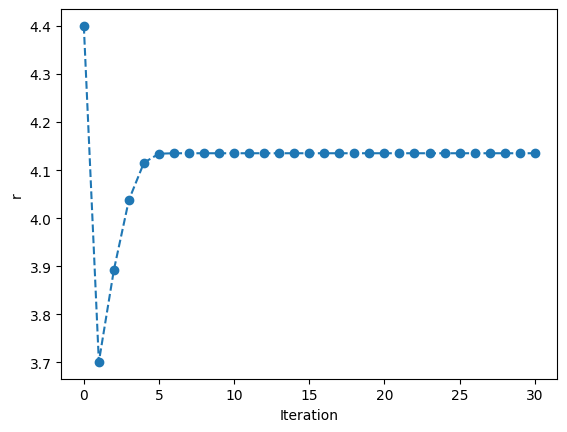Exercise#
This time we need the first and second derivatives.
def first_derivative(r, A, B):
"""
The first derivative of the Lennard-Jones potential model.
Args:
r (float): Atom-atom distance (Å).
A (float): Interaction parameter (eVÅ^12).
B (float): Interaction parameter (eVÅ^6).
Returns:
(float): Potential energy.
"""
return -12. * A / r ** 13 + 6 * B / r ** 7
def second_derivative(r, A, B):
"""
The second derivative of the Lennard-Jones potential model.
Args:
r (float): Atom-atom distance (Å).
A (float): Interaction parameter (eVÅ^12).
B (float): Interaction parameter (eVÅ^6).
Returns:
(float): Potential energy.
"""
return 156. * A / r ** 14 - 42 * B / r ** 8
We when implement Newtons method, which does not need hyperparameters.
A = 1e5
B = 40
r = 4.4
r_list = [r]
for i in range(30):
E_dash = first_derivative(r, A, B)
E_ddash = second_derivative(r, A, B)
r = r - E_dash / E_ddash
r_list.append(r)
It is easier to show the convergence with a plot.
import matplotlib.pyplot as plt
plt.plot(range(31), r_list, 'o--')
plt.xlabel('Iteration')
plt.ylabel('r')
plt.show()

To consider the cause of the result where the starting value is 6.0 Å, watch the following LOIL (Bath moodle access required).
